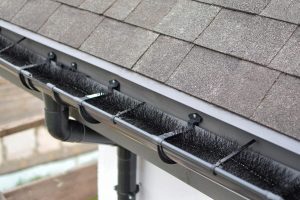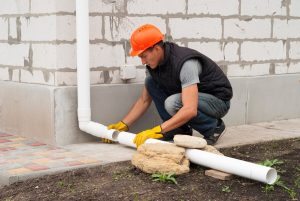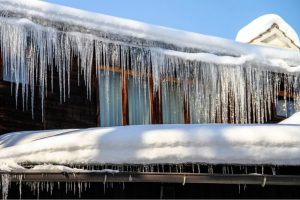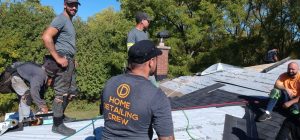How to Prevent Your Commercial Roof from Ice Damming
Apr 7, 2023

Ice dams formation is very common in homes during the winter when there are extremely cold temperatures, gusts of wind, and snow. Although it may look stunning on the roof, it can be very dangerous and should be removed as soon as possible. The best solution is to prevent their formation in the first place.
With harsh winter weather comes cold temperatures, snow, wind gusts and ice accumulation. Such dangers can have an influence on your commercial roofing system. Although commercial flat roofs are constructed to withstand winter elements; sudden blizzards, harsh temperatures and extreme amounts of ice can cause damage to both the roof and your commercial building as a whole. Knowing the cause of ice dams and what can be done to prevent them will save you from dealing with leaks, structural damages and significant roof repair costs.
What are Ice Dams?
Ice dams are ridges of solid ice that form when melting snow refreezes along the edge of a roof, preventing water from properly flowing off of it. The melting snow and accumulated ice will eventually build-up until it overflows. The accumulated water can then escape into the structure, causing damage to ceilings, walls, insulation or other important equipment that belongs to the interior.
Although the weather cannot be controlled, there are ways to prevent and reduce the formation of ice damming.
Is it Icicles or is it Ice Dam?
The terms icicles and ice dams are often used interchangeably, but they have different meanings. Ice dams are formed when the temperatures fall below 32 degrees Fahrenheit, and they are mostly found on low roofs. Common causes of ice dams are:
- Poor ventilation and insulation in the attic.
- Placement of heating in the attic.
- Recessed lighting near the roof.
On the other hand, icicles are found on eavestrough, even when the roof does not have ice dams. Unlike ice dams, small icicles do not pose any threat to the roof or the people living in the house. They can be found behind the gutters, through the soffit, or roof edges.
However, to be safe, both icicles and ice dams should be removed immediately.
Damage Caused by Ice Dams
Ice dams can damage your commercial roof in the following ways:
Freezing Water – When water has the opportunity to freeze, it expands and can then tear sealing points along the edge of the roof. Another aspect of ice dams is the large icicles that can accrue across the edge of the roof. The weight of such icicles can cause damage to not only the roof, but also the eavestrough. If you notice large icicles forming on your building, stay clear of the area to prevent potential physical danger in case a break occurs.
Pooling Water – Water that pools behind an ice dam has the potential to make its way into your commercial building. With nowhere to drain, the water can leak through the roof and into the building. This can cause extensive damage to the structure of the building as well as to the insulation, drywall and electrical systems.
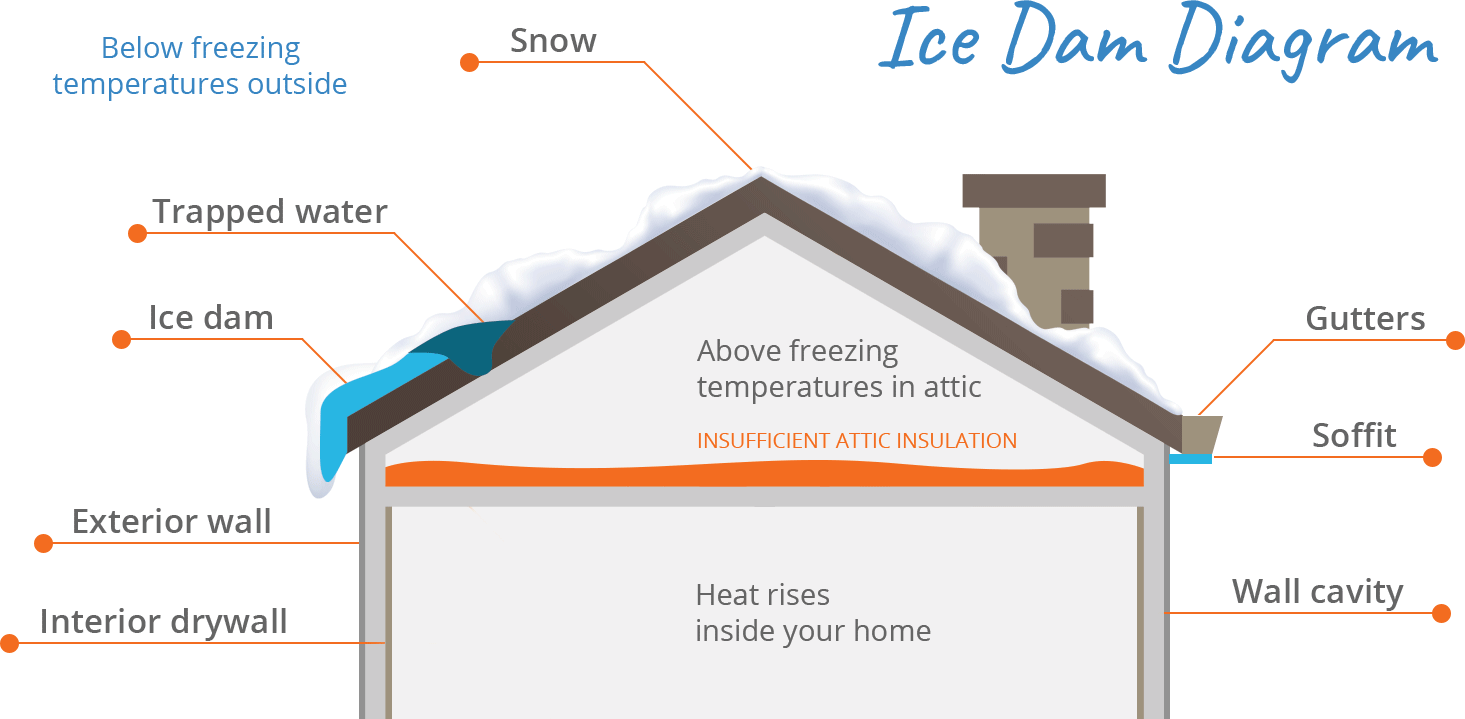
Preventing Ice Dams
Ice dams can be prevented by utilizing the below techniques:
1. Regular Inspections
After a large snowfall or ice storm, it is important to inspect and clear the roof of snow. Keeping snow and ice build-up to a minimum can help in preventing ice dams. Should you notice snow build-up on your roof, it is recommended to have this removed to prevent ice dams from forming. Additionally, proper roof inspections will allow you to know of any problems that may be affecting your roof. This will give you an opportunity to make necessary replacements or repairs of damaged materials should an inspector find any issues.
2. Allow for Proper Ventilation & Insulation
Ice dam prevention starts with making your commercial building more heat efficient. Allowing for proper insulation under the flat roof and within the building will allow for cool air to flow efficiently. Insulation helps to prevent heat loss and does not allow snow to melt and re-freeze due to the fluctuations in temperature. In addition to attic insulation, proper roof ventilation will ensure heat can be controlled. By keeping a uniform temperature through controlled heat, the building will allow heat to escape through the installed vents.
3. Find & Seal Air Leaks
Air leaks in your commercial roof will give warm indoor air the opportunity to escape. Air leaks also create warm pockets on the roof where snow and ice can melt and turn into accumulated water that has the potential to re-freeze. If you suspect your building may have an air leak, getting an inspection done will help you address and properly take care of these issues.
Next Steps
After discussing how to take action against ice dams, you should be equipped to tackle these situations before they happen. By taking action to correct the cause of ice dams, you’re preventing substantial roof damage while making your building more heat efficient in the process.
If you’re experiencing ice damming on your commercial flat roof, call D’Angelo and Sons today for a free estimate today!
